One of the rooms in the heart of the Milk of Dreams exhibition in the Giardini venue is entitled The Witch’s Cradle. The Peggy Guggenheim Museum is showing an exhibition, Surrealism and Magic: Enchanted Modernity. These venues celebrate the twentieth century surrealists, in the Giardini space the work of the women especially. In this second of my blogs on the Venice Biennale I reflect on my growing appreciation of the Surrealist movement and its legacy.
Twentieth century Surrealism was a revolutionary, disruptive approach to image making. Their early work was influenced by the irreverent and absurdist Dada artists. They generally rejected abstraction as decorative and introduced innovative materials and techniques to mark making. They were interested in Freud’s ideas of the sub-conscious, in the irrational. However, setting Surrealist works into the 2022 Biennale celebrating creativity of our times, almost a century after André Breton’s First Manifesto of Surrealism, has opened up further perspectives.
Surrealism and Magic at the Guggenheim
The Guggenheim explanations refer to the stimulus of magic, the occult and mythology, for the artists who cultivated the persona of magician and alchemist. Kurt Seligman’s The Alchemy of Painting.for example depicts artist as shaman.
And there are other clear references.
In Ernst’s works The Chemical Wedding and Robing of the Bride, painted when Ernst was living with Carrington in an idyllic French village, before war caught up with them, there is symbolism n the choice of those beautiful, vibrant, colours, in the checkerboard representing dualities (an often-repeated iconography) and once again in shaman-like figures.
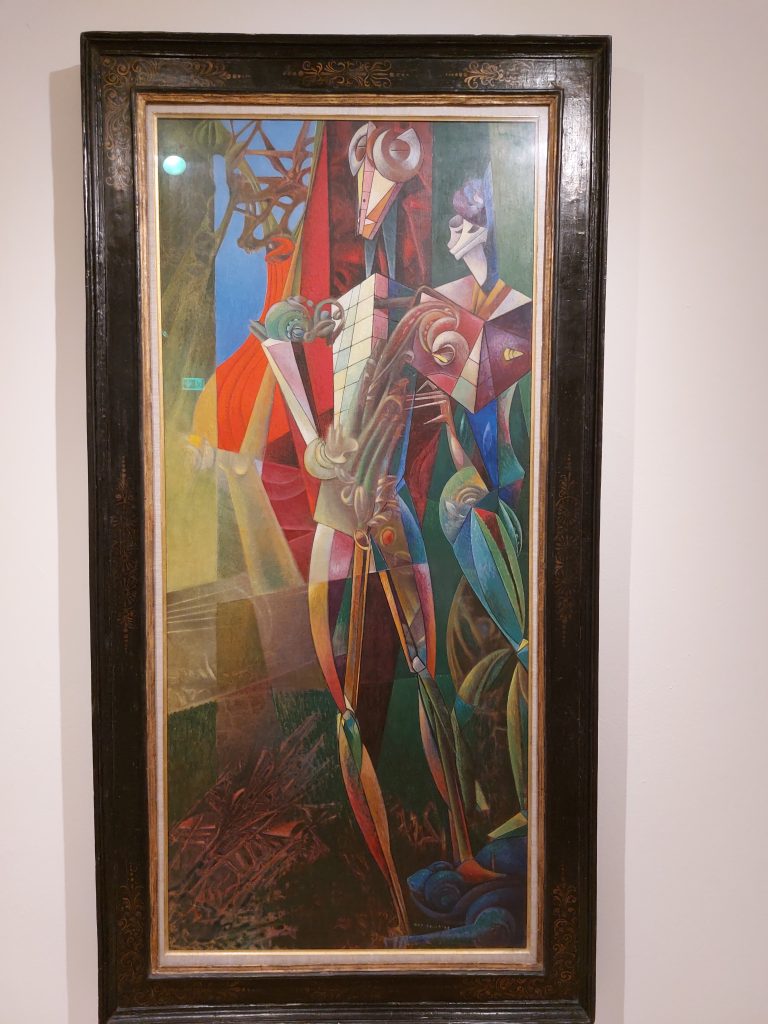
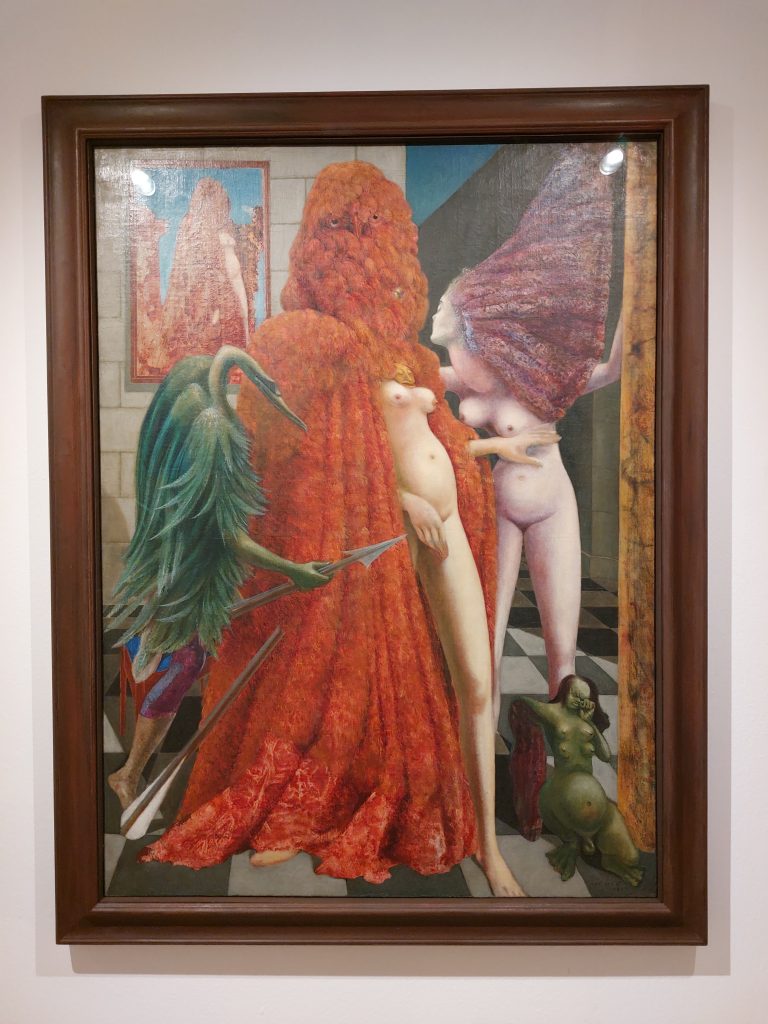
Surrealism viewed from today
The work, however, of the surrealists like other avant-garde movements was conditioned by the times they lived in. Artists were confronted with a fast-changing world, new technologies, accumulating threats of all sorts, changes in society and social mores. Sounds familiar? Severally and collectively, they responded in different ways. Whatever artists’ individual interests and affinities were with the occult, magic and myth, their image-making suggests so much more. Their work also reflects the indivisibility of humanity and its environment, of affinities with nature and the beauties of the world as well as its terrors. Unlike the Futurists, they were not celebrating the new technologies, but looked to an adaptation eventually an accommodation to the world of the machine. Human imagination should be harnessed in bridging to potential futures which will inevitably involve a more fluid, open approach to human identity.
The new surrealists?
Contemporary works are not surrealist in the early twentieth century sense, and of course build on years of intervening artistic movements, but like those early surrealists they reflect that meeting today’s challenges and upheavals requires imagination, an openness to transformation, shapeshifting, and affinity with the natural world. Like them in their image making they tap into a world of the irrational, the bizarre, their cultural myths, and question world outlooks.
The witches yesterday and today
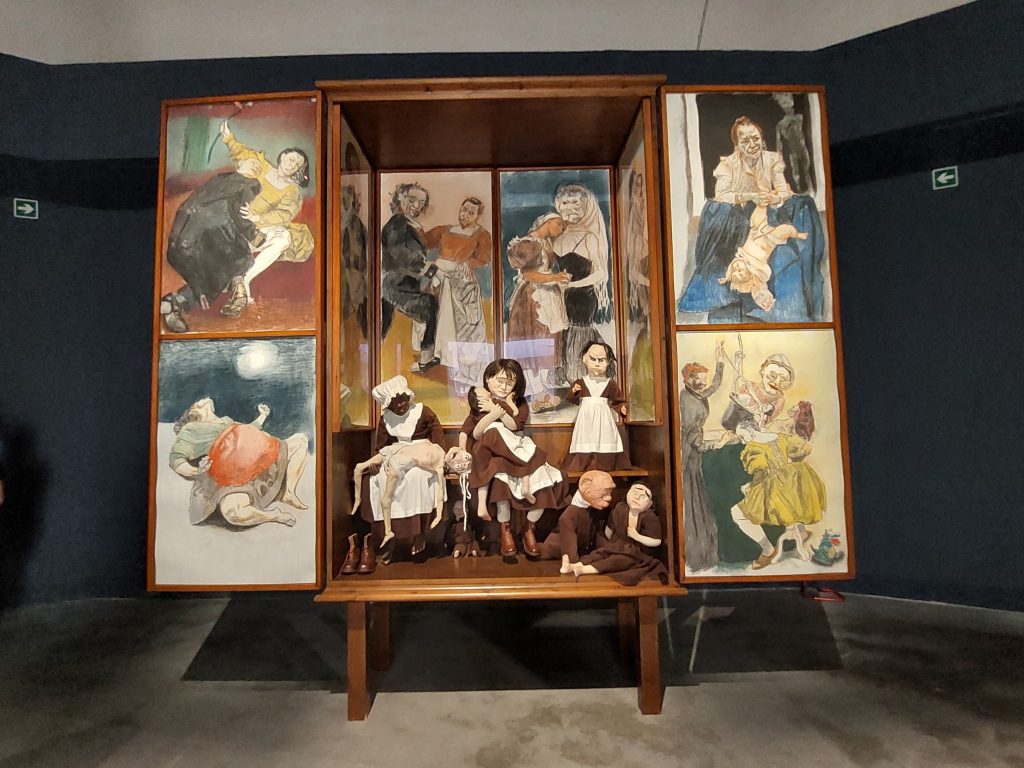
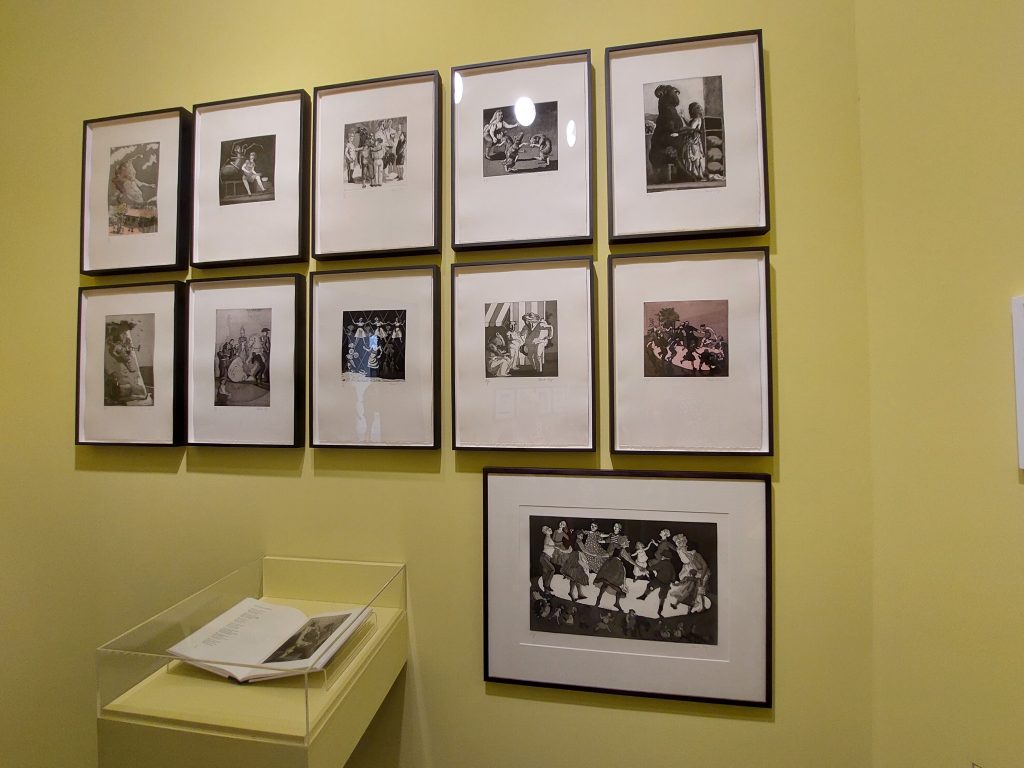
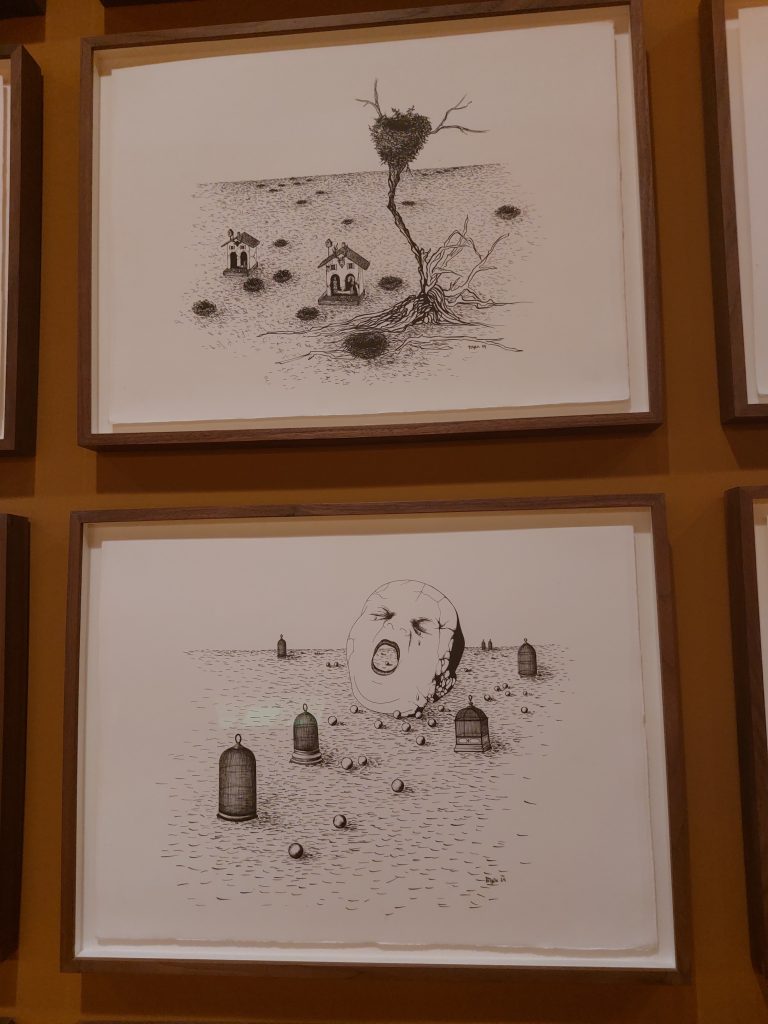
The explanation to the Witches’ Cradle room sees the early women surrealists in many ways as fore-runners of today’s women’s’ and gender-fluid artists’ construction of their identities in male-dominated structures. In particular, I found very telling the juxtaposition of the disturbing, subversive works of Paula Rego and Carrington but a continuity of independence in outlook and originality in artistic practice emerges in the work of many other women artists.
Something to live up to!
